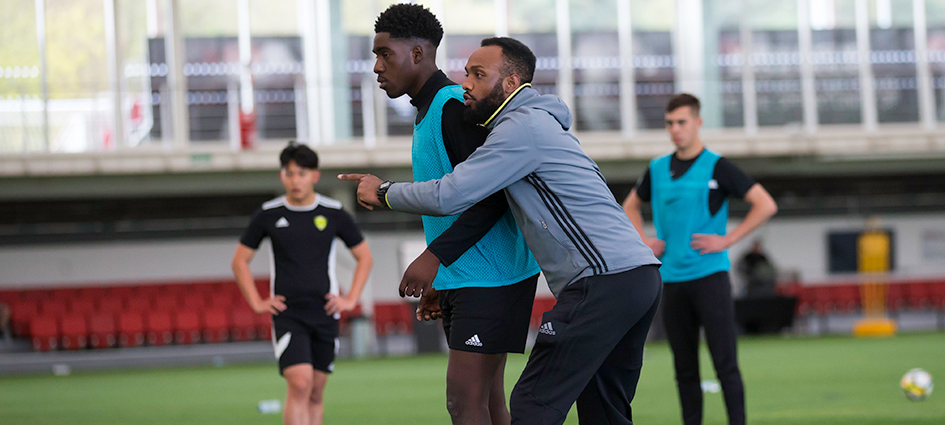
How to communicate with the teenage footballer
- Perry Walters
- 16 January 2019
Q&A: Dr Perry Walters, psychology consultant, outlines some of the key issues and opportunities when communicating with players aged 15 and 16.
How important is it for coaches to tailor their information according to the age (and experience) of the players they're working with – particularly teenagers?
Research is beginning to show that, in addition to the obvious physical differences, there are significant psychological changes as we mature. These developmental changes affect how players’ perceive, process and respond to information. This is knowledge that might be helpful for coaches’ understanding and practice.
Recent insights from the sciences of mind and brain suggest, for example, that adolescence is a unique period of development that impacts how teenagers think, feel and behave. It is characterised by intense emotions, novelty seeking, risky decision-making and increased importance in attachment to peers.
It's also a time when self-control and judgement networks, linked to frontal brain networks, are still not fully mature.
Mindful of the above, coaches can optimise environments to account for adolescent-specific opportunities and vulnerabilities by monitoring the emotional intensity around training and matches, ‘scaffolding’ pressure, and putting an emphasis on process rather than outcome goals.
Coaches can also foster a ‘capability mind-set’ through interpreting mistakes as part of the journey and an opportunity for learning as well as modelling how to respond positively to set backs.
Can you outline your recent work on helping young footballers develop their resilience and ownership?
Recent work, delivered as a psychological intervention, communicated messages about the developing brain to mid-adolescent (15/16 years) academy players in an effort to help foster a sense of resilience and ownership in their learning dispositions.
In essence, if players are made aware through science that their talents are not fixed but amenable to change then this has been shown to impact how they interpret and react to setbacks, and also puts the locus of control with the player.
This borrows from schools’ research which shows that when learners are taught that the brain is not fixed and that they are in control of strengthening their own brain and talents, then this has a positive impact on their motivation, engagement and performance.
The pathway towards becoming a professional footballer has many highs and lows, and the key message of this project was to empower players to realise that their talents are improvable and within their own control.
Try to start from the perspective of what the players already know and build from there
What processes did you follow to translate content from an academic domain and package it for a football context? We adapted messages from the original classroom research referenced above and situated examples within football contexts, such as suggesting that the unique capacity of the adolescent brain to learn new things was an opportune time to strengthen the ‘football brain’ – including improving decision-making, creativity and emotional control.
As a means to communicate quite complex concepts we used different tools such as video, PowerPoint and also VideoScribe – a cartoon package that presents information through real-time animation and writing.
What advice would you give coaches who have to translate 'technical' content for delivery to young players?
Try to start from the perspective of what the players already know and build from there. For example, we used video examples of John Stones’ decision-making – successes and setbacks – to get across the concept that frontal-brain capacities, such as insight and judgement, are capable of improvement throughout the teen years and well into our twenties, especially in supportive environments.
Using a variety of methods to get across information is important. VideoScribe proved particularly helpful for us: it engaged the players in quite complex information, but could be customised to their levels of understanding. We also used examples that were relevant to the players’ own experience, such as identifying ex-players from the academy who had gone on to join Premier League clubs, relating this to their resilience and ownership in their development.
What tools can coaches use to communicate more effectively with young players? This project used a variety of tools to communicate concepts. These included presentations that adapted existing models and concepts around the developing brain for football, specially created cartoon packages underpinned by recent research, and video clips to complement the messages.
We also utilised techniques used in previous psychological interventions and adapted them for young footballers. So, for example, participants were invited to give advice to a fictitious fellow teammate who believes they have insufficient talent to progress at the elite level.
This article was first published in The Boot Room magazine in December 2016.


